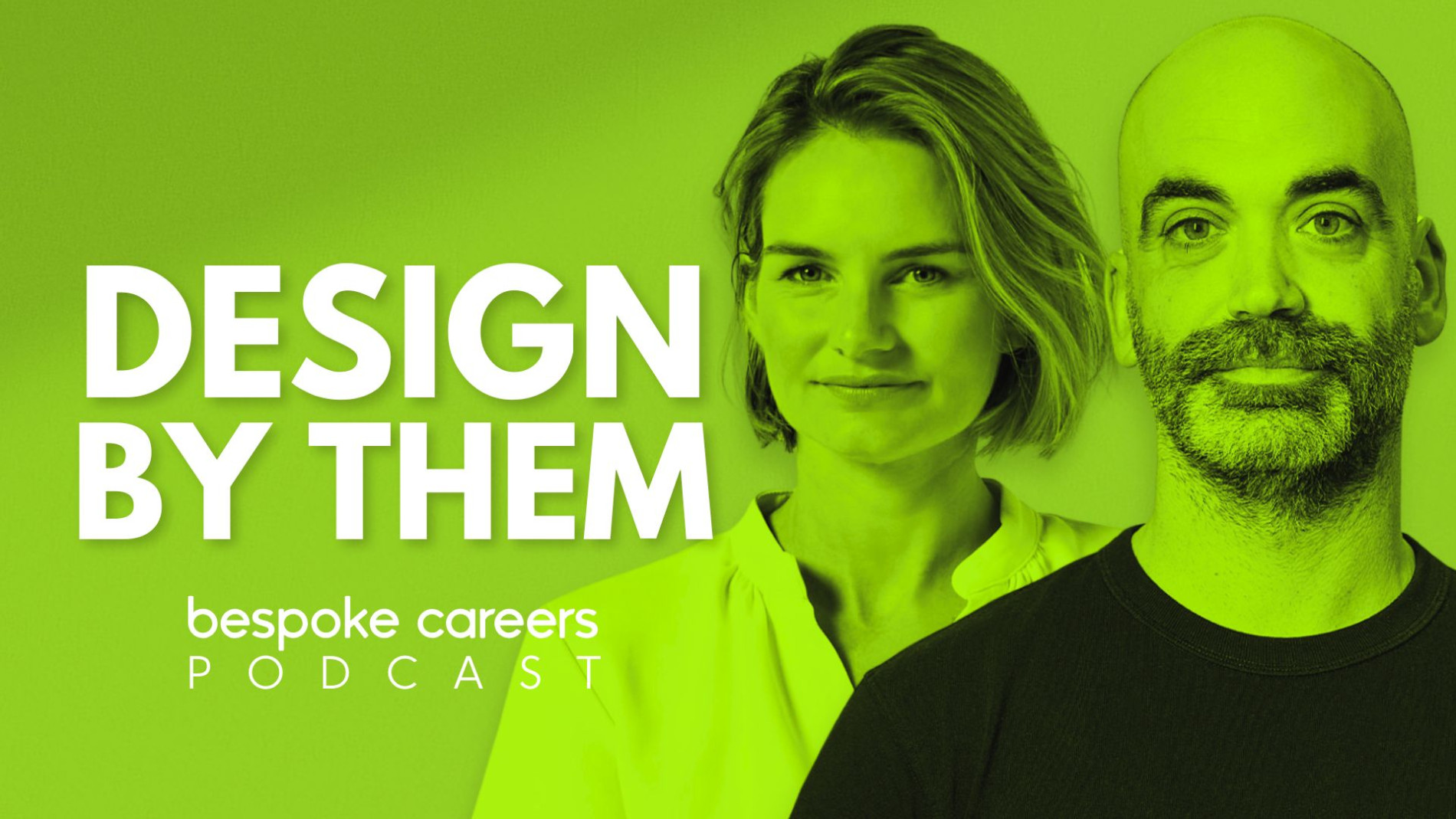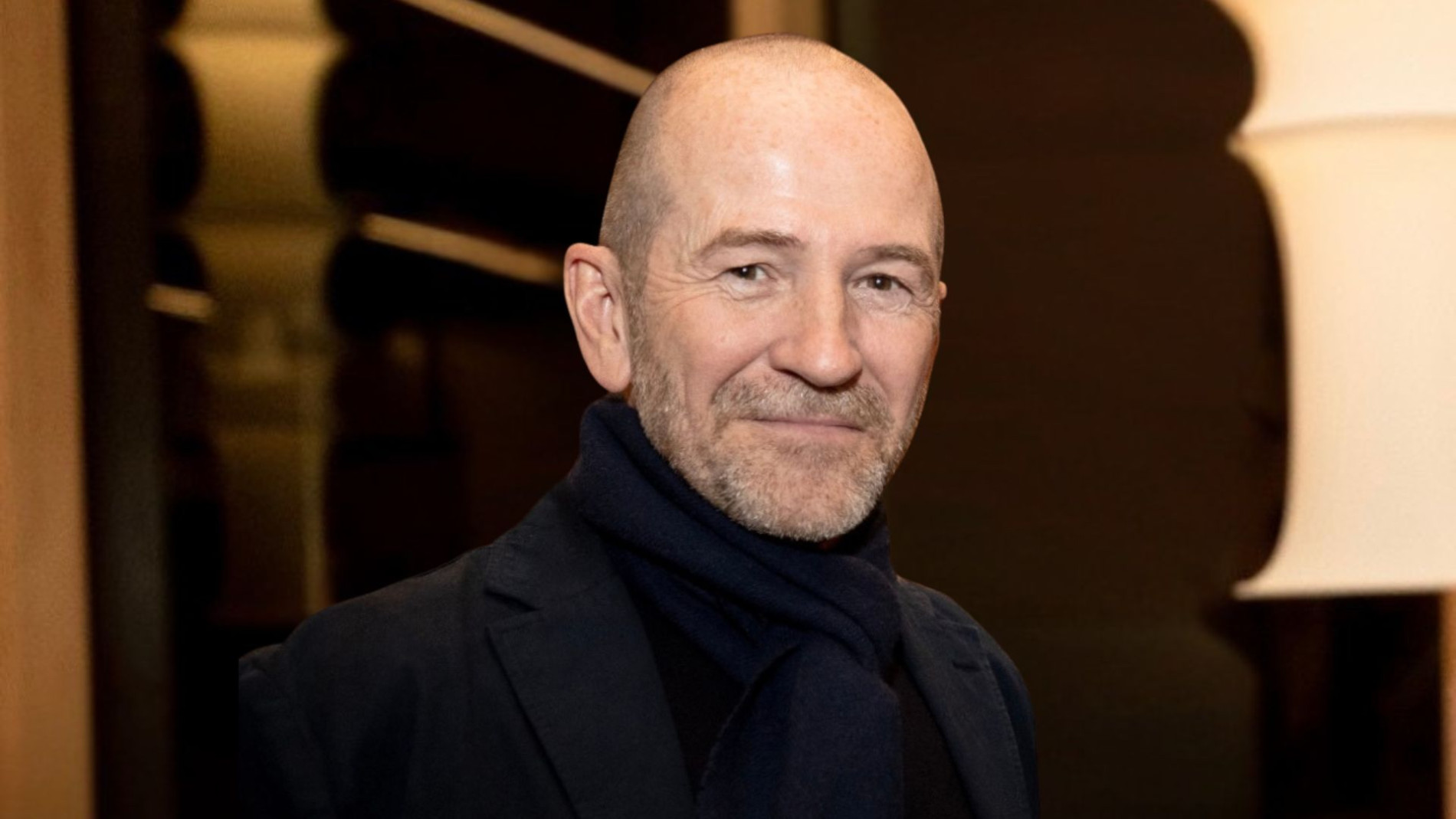
Andrew Waugh: Sustainability compromise is the fault of the architect
Andrew Waugh on refusing bad briefs and doing the job properly
Andrew Waugh is founder and director of 30-strong Waugh Thistleton Architects, a practice he co-founded in 1997 with Anthony Thistleton. Waugh Thistleton has pioneered the use of engineered timber in the UK and beyond, long before awareness of climate emergency shifted industry focus towards timber. He lectures extensively across Europe and in North America on greater adoption of timber in buildings.
Download the report
Where did you train as an architect, and to what extent did sustainable design figure into your education?
AW: Kingston, and it didn’t really figure. There were electives available, but they were the kind of thing that you did if you weren’t very good at design.
Was there a light bulb moment when you engaged with the impact of the built environment on climate change?
AW: Yes, it was when EcoHomes was introduced [2006] and there was a point scoring system that to get your buildings passed. I’ve never been very good at doing what I’m told without understanding why. And one of the EcoHomes points depended on having a solar panel on the roof unless you were near a bus stop. But if you were near a bus stop, it didn’t matter. And it just irked me. So I began to research. And the more I read, the more obvious it became to me that the impact of the built environment on the planet, resources, and biodiversity was so massive. It was not being spoken about at all.
Were there any other pivotal sustainability ‘learning moments’ that you can point to over the years?
AW: When we were working on Murray Grove, we did the carbon assessments, and our mechanical consultant suggested that we count embodied carbon and see if the planners would accept it. No one in that meeting had ever heard of embodied carbon.
So that was way ahead of the curve. What year was that?
AW: 2006 and that was really a pivotal moment for us, understanding not only the operational, but also about the upfront carbon from construction materials.
87% of architects feel they have to compromise their sustainability values at work. You’ve had your own practice for the majority of your career. Have you ever had to do this, and how do you manage it?
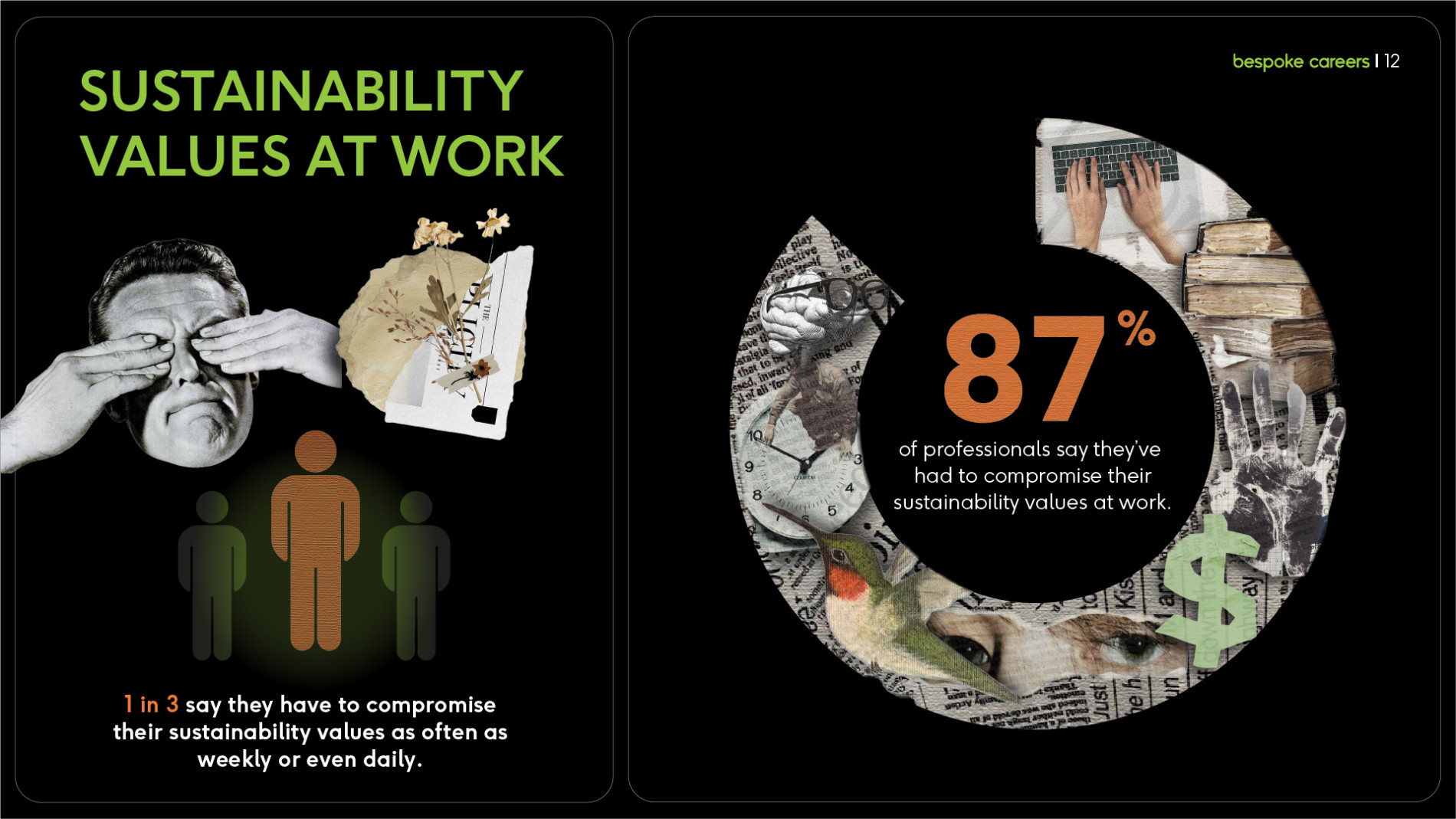
AW: We have, and we have counselling sessions in the office about it. There aren’t any metrics out there to quantify a lot of the decision making process. So, it’s quite subjective.
If you build a building that is attractive, I believe it’s more likely to stand the test of time than an unattractive building. So if you use slightly more carbon to create something attractive, does that offset the most carbon efficient way of doing it? It probably it does. That’s a conversation we need to have and be outspoken about.
On the Black and White building, for instance, the last bay on the north northwest facade of solar shading is not necessary. But the building would look strange if you left it off. That’s a simple example.
But there are other conversations. If we have a project where the client says, I want a four-storey basement do we say, ‘No, we’re not doing it’? I don’t think so because we’re still in the phase of a transformation of architecture, and you can’t let perfect get in the way of good. You need to be open and have conversations and talk about compromise, but you can’t let it stop you doing what you do.
If there’s compromise around sustainability and design, that is mostly the fault of the architect and not of the client or the planner or building regulations. It’s because the architect does not see that yet as a metric of success. When we teach at university, the students will know who we are, but the staff rarely do. The students know our work, but the staff doesn’t. So yeah, I’m sure that younger architects are feeling compromised in what they do.
95% of architects state that sustainable design is a factor when considering job opportunities. Three out of four say it’s very important or a deal breaker. What’s your take on these numbers, and do they reflect what you see in your applicants?
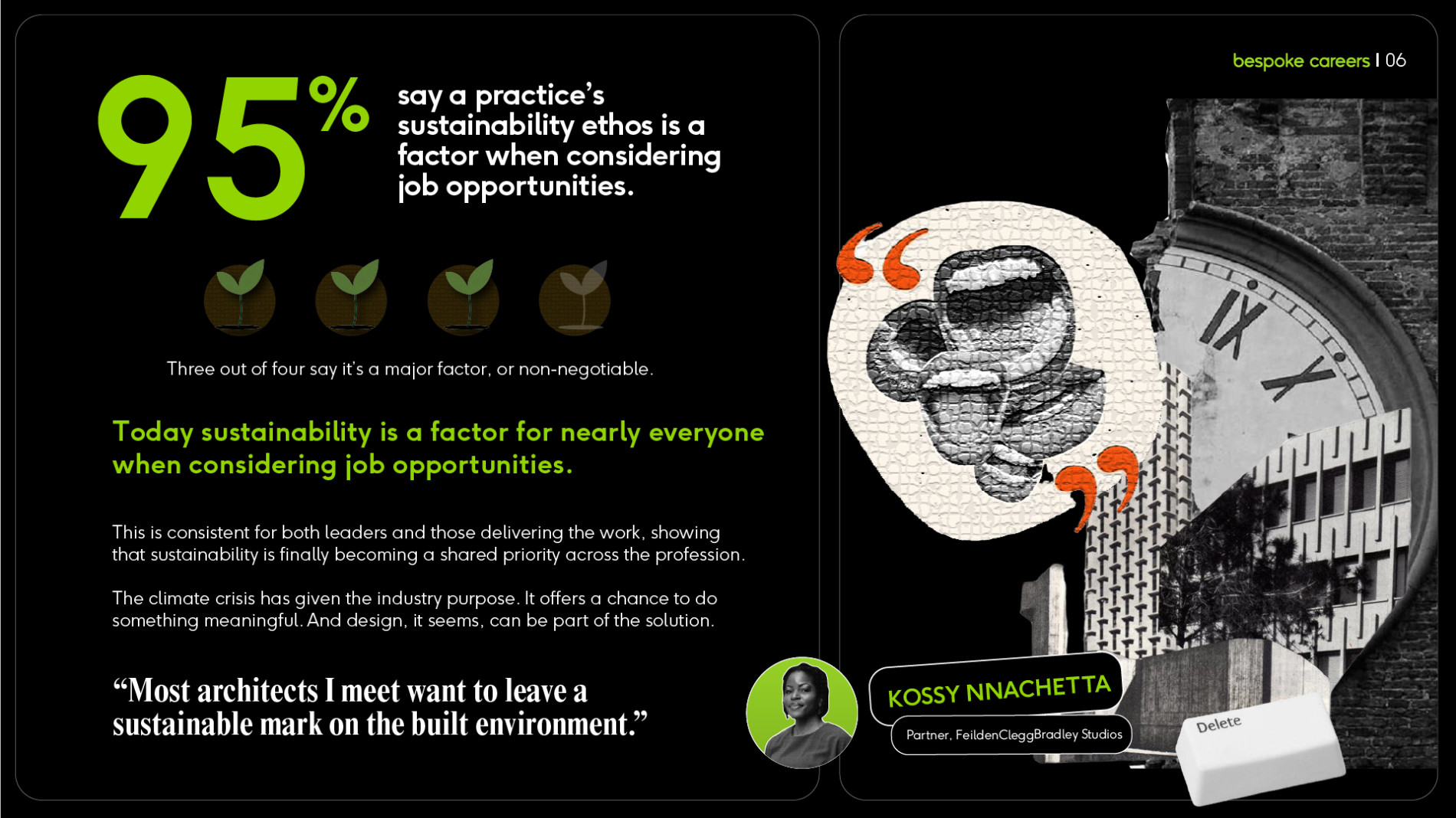
AW: Of course, because those are the people that apply to us.
What sustainability upskilling do you think mid career architects need?
AW: The profession needs to undergo a paradigm shift. People in mid-career need to self-educate, and they also need to not be afraid to talk about it.
What do you think will be the most important sustainable design skills by 2030?
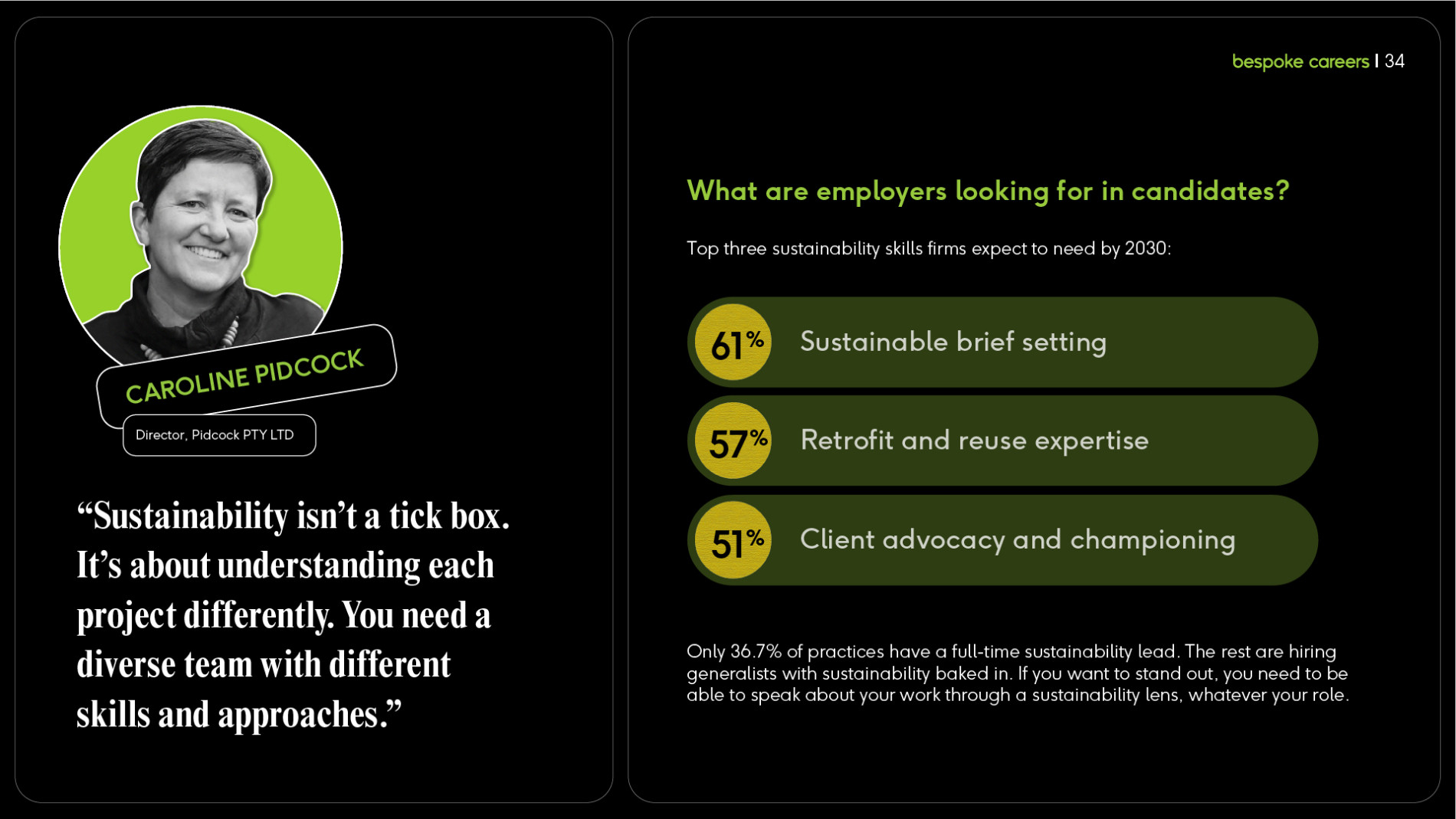
AW: Well, the brief is all. Help your clients set the right brief. And most people aren’t trained in how to retrofit buildings or how to think about climate adaptation, so I think those are going to be major jobs for architects.
Advocacy can only get you so far. You have to just do it.
How important are sustainability skills and experience in your hiring process?
AW: They must be completely integral to design. Generally we find that it’s been taught hair shirt and you get somebody who just wants to do everything in straw bales and mushrooms. If somebody has been educated as a critical thinker and draws beautifully, then they’re very easy to transform and educate about sustainability.
What does a perfect candidate look like from from a sustainability lens from your vantage point?
AW: We don’t just hire one type of person. We focus our attention to what is required in the office. We try and put people in the right place on the pitch, and we talk to them about that position when we hire them. We always interview two or three times, but then people tend to stay here for 10 years.
You undertake a lot of research within your practice. How did it come about, and what does it bring to the practice?
AW: About 25% of our turnover is research. We have two people full time on research, and most others in the office dip in and confer. We also have regular sessions where we look to see how we can bring our research findings into our projects.
Is that all grant-funded?
AW: It’s all paid for. We don’t research for free. So we have three Horizon projects and a project for DfE, Network Rail, the National Science Foundation, the US Department of Agriculture, Built by Nature, and others.
Most firms, particularly yours, say they care about sustainability. What’s one actionable step that could be implemented tomorrow to embed sustainable design more into the hiring process?
AW: I know that there are positions for people who are sustainability leads in a practice. . We don’t have a sustainable lead because that’s everyone’s job. It’s just reintegrated into what everybody does.
You could certainly ask questions about it and find out what people’s attitude towards the importance of sustainability is within practice.

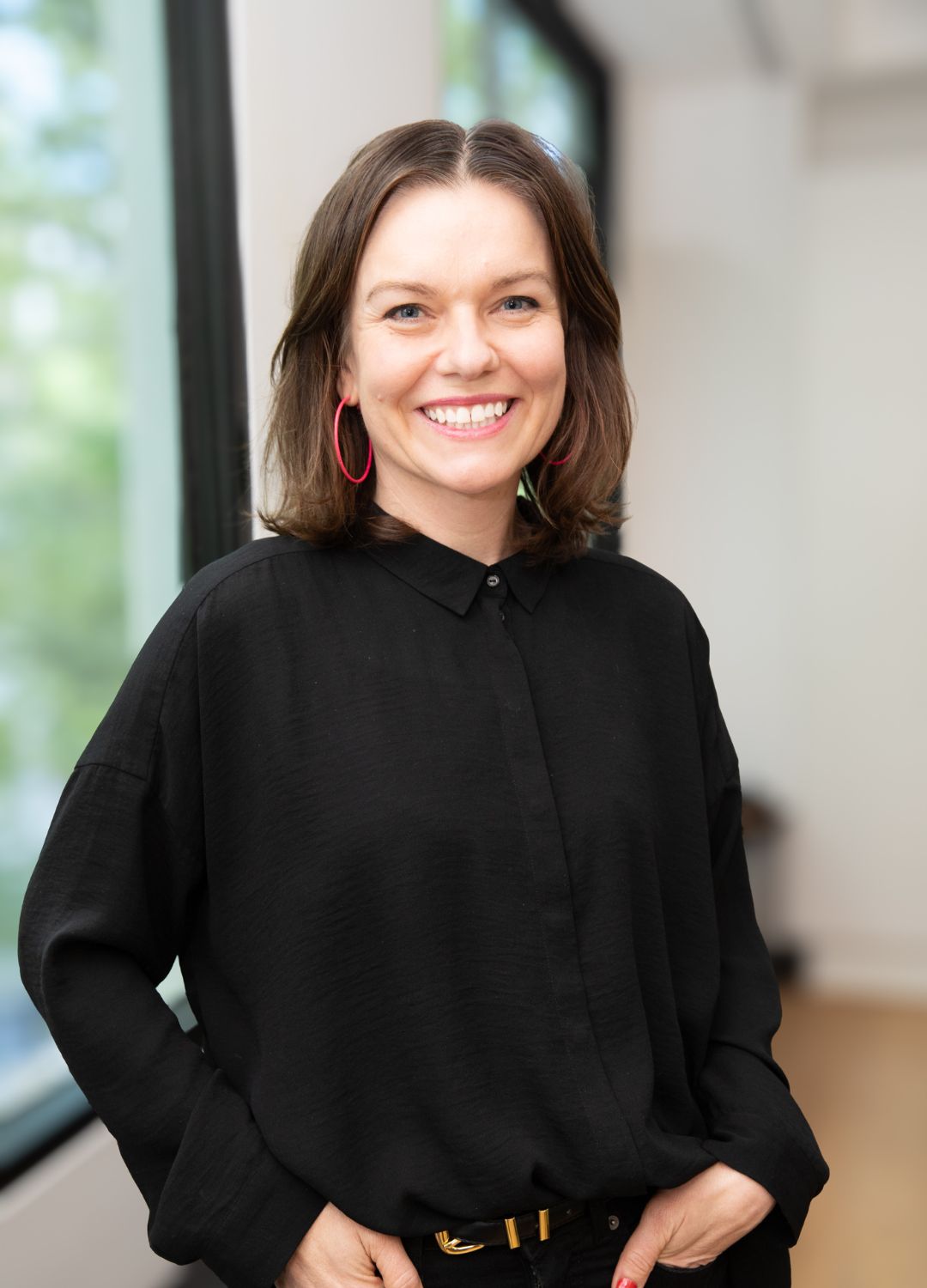
Looking to hire top talent
 or advance your career? Let's talk.
or advance your career? Let's talk.
We connect exceptional firms with talented professionals.
Let’s discuss how we can help you achieve your goals. Get in touch with the team today.
Related Posts

A designer shaped by sensitivity, travel and an instinct for beauty reflects on early influences, independent practice, social media and staying human.
Thomas spoke to Chris Simmons about navigating architecture school without a blueprint, the realities of early career practice, and how building a personal brand opened doors the profession didn’t.
What architects can contribute to the metaverse, how AI and parametric tools are changing workflows, and the challenges of building healthy design cultures.

